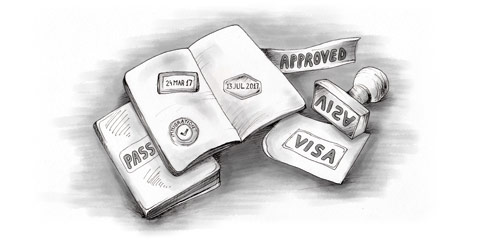With the growth of Mexico as an expat retirement destination, many people may choose to take their long-term residency to the next level: naturalisation. Acquiring Mexican citizenship is a long process, and nobody can apply if they have not yet been granted the permanent resident status. Exceptions apply to this, like marriage to a Mexican national, which may allow you to apply for citizenship throughout a shorter period (this is subject to your marriage being registered in Mexico).
Note that citizenship applications are not handled by the Immigration Office, but by the Secretaria de Relaciones Exteriores (SRE) . The naturalisation process is quite simple in Mexico if you have already been granted your permanent residency.
According to Mexican law every citizen must be able to speak Spanish and have a basic knowledge of Mexican history and culture. You will therefore be asked to undertake an exam in order to acquire Mexican citizenship.
Although almost every country today allows dual or multiple citizenships, make sure you double check with both your country of origin and the Mexican law to make sure you will not have to surrender your previous citizenship.
Rights of a naturalised citizen
Full naturalisation entitles you to most rights and benefits of a Mexican national (i.e. the right to live, work, claim state benefits, pay taxes and vote or be elected in all elections). However, as a naturalized citizen, you are not allowed to serve in certain positions (mostly in the government) such as policeman, crew-member of Mexican vessels or aircrafts, President of the Republic, Member of Congress, enroll in the military, amongst many others.
It’s important to also keep in mind that once you obtain Mexican citizenship, your consulate can no longer provide protection. Should you find yourself involved in any problems with authorities, you will be dealt with as a Mexican citizen and your consulate cannot step in to help.
Lastly, keep in mind that the process, documentation and requirements will be defined by different factors: your links to the country, marriage, son of a Mexican citizen born abroad, whether you have given birth to a child on Mexican soil, if you are of Latin American descent, or how long you have resided in the country.
Although the process is quite simple and straightforward, we recommend you find a good immigration lawyer to help you through the process.
How long does it take?
The naturalisation process takes about one year, or even longer (there have been cases of up to five years). Once the application has been reviewed, you will be asked to take a multiple choice exam for which you need to demonstrate a basic knowledge of Spanish knowledge.
Once you have received your Mexican citizenship, it is important that you apply for your Mexican passport and more importantly your INE card (Instituto Nacional Electoral or Electoral National Institute), formerly called IFE, but still colloquially referred to as it.

